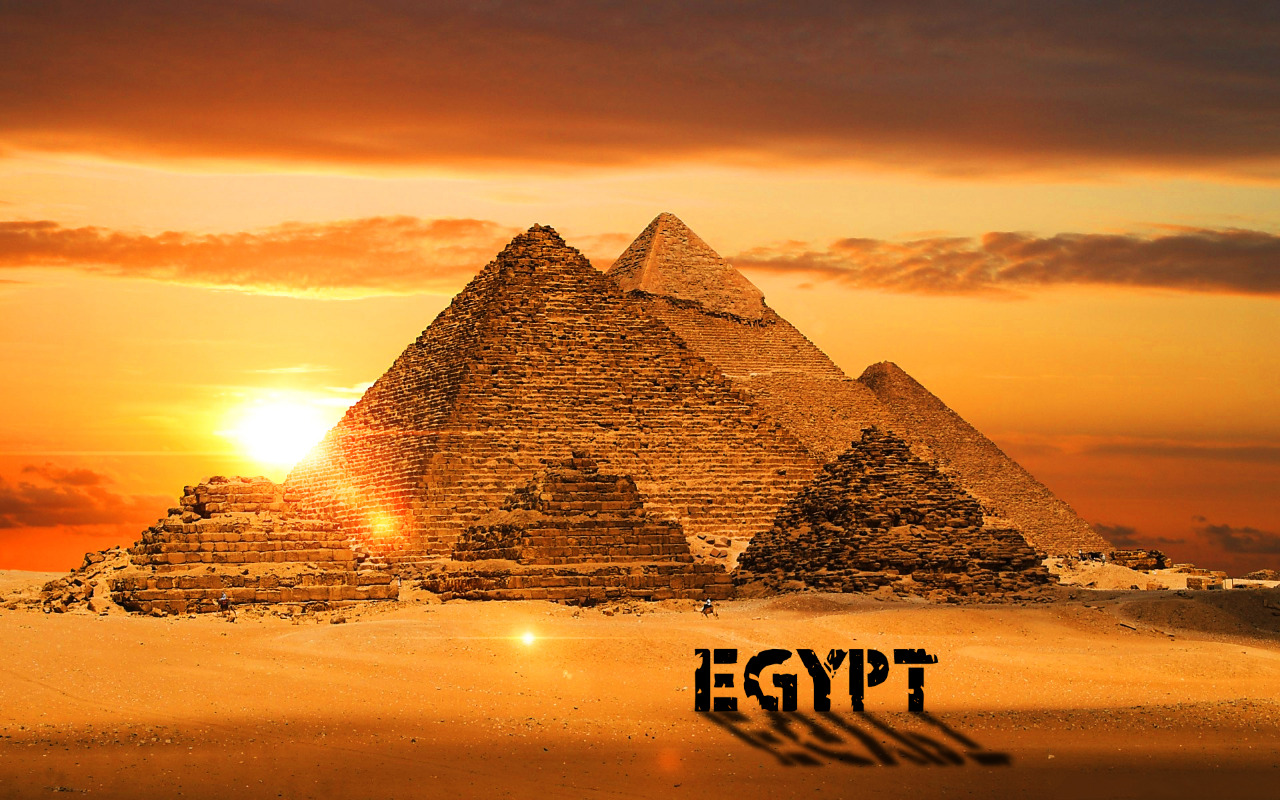
The area of the Arab Republic of Egypt is more than 1,000,000 km². Its borders stretch from the Mediterranean in the North, where the Nile meets the sea, to the borders of Sudan, Libya and over the Sinai Peninsula to the borders of Israel and by sea, Jordan, and Saudi Arabia. The Nile (the world’s longest river with its 6,600 km) has created through tens of thousands of years, a fantastic fertile landscape on its banks where approximately 95% of Egypt’s population lives.

The pharaohs of the New Kingdom, 1550 – 1000 B.C., ruled from Luxor in the south, where their exquisite tombs are located in the Valley of the Kings and the “Pharonic” Vatican, The Temple of Karnak. In 332 B.C., Alexander the Great came to Egypt, starting the Greek Ptolemaic Era. The Romans and later Byzantium took over after winning the battle of Actium in 30 B.C. Later on, Cleopatra VII committed suicide – using snakebite, which led the holy family to flee to Egypt. St Marc came to Christianize the Egyptians, leaving behind him one of the first Christian communities in the world, the Coptic Church.
In 642 A.D., the Arabs overruled Egypt. During the coming hundreds of years, Cairo and Egypt were alternately controlled by Damascus, Baghdad and different clans, such as the Tulun family, the Fatimides, the Ayoub family and the Mamelouks.
By 1517, Egypt became part of the Ottoman Empire until Napoleon's invasion in 1798. From 1805, modern Egyptian history began under the reign of the Mohamed Ali family. Cotton was starting to be cultivated, railroads and the Suez Canal were built, and modernization had struck Egypt. In 1952, Farouk, the last king of Egypt, was overthrown in the revolution led by Gamal Abd El Nasser.
By coming to Egypt, you will hear more about Cheops, Ramses, Saladin, Nefertiti, and Sadat and Amon personalities
Clothing
Egypt has a long summer, from April until the beginning of November, with temperatures during the daytime between 25° and 40° C. Daytime temperatures during winter vary between 15 and 28 degrees. Temperatures in Upper Egypt (south) are usually 5°C higher than in Cairo and the rest of the north of Egypt.
Language
Arabic is the Official Language, while English and French are widely spoken by educated classes.
Egyptian food
Egyptian food is very rich and tasty, the Egyptians eat a substantial amount of bread and drink too much water with their meals. Typical Egyptian bread is made of leavened wheat flour in hollow round flat loaves. In rural areas, bread is made of unleavened maize flour.
Egyptians are mostly rice eaters, although macaroni often appears in their meals. In the average Egyptian home, breakfast is a substantial meal consisting of more than one of the following items.
Foul Medamis (Baked Beans), Gibna Beida (White soft cheese), Eggs (Beid), Pasterma (Corned Beef ), Halawa (Sweet Sesame Cake), Jam (Meraba) or honey (Assal Abyad) and tea (Shai) or Coffee (Qahwa).
In the countryside, breakfast sometimes includes Fitir Messhaltet (a very rich wheat flour pie served with either sour cheese or honey).
Population
The population of approximately 100 million people is concentrated along the Nile, 5% of Egypt’s total area. 22 million people or more live in Cairo and its suburbs. Other large cities are Alexandria, Mansoura, Tanta, Zagazig, Ismailia, Suez, Port Said, Aswan and Luxor ).
Religion
Around 89% are Muslims and approximately 11% are Coptic Christians.
Voltage
The voltage is always 220 V in all tourist establishments.

